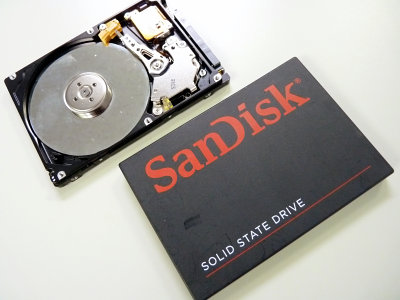Even though high-speed SSDs are becoming popular, why does the speed of cloud SSDs remain the same?

SSD throughput has increased explosively over the past six years, but for some reason, the speed of cloud storage SSD instances hasn't changed at all. Database architect Victor Leeds speculates about the reason.
Database Architects: SSDs Have Become Ridiculously Fast, Except in the Cloud

SSDs have multiple independent flash chips inside, each of which is accessed in parallel, so as long as the SSD controller is working properly, throughput depends on the speed of the interface to the host.
According to Mr. Leeds, over the past six years, the transition from SATA to PCIe 3.0, then PCIe 4.0, and PCIe 5.0 has progressed rapidly, and the throughput of SSDs has become explosively faster. It also increases capacity per cost.
Among the top SSDs for data centers, they boast up to 13GB per second of throughput and over 2.7 million

An early example of adopting SSD for cloud storage was Amazon EC2's i3 instance , which began offering in early 2017. At the time of the service's launch, NVMe SSDs were still expensive, and an i3 instance with eight NVMe SSDs in one server was ``very remarkable,'' Lees said.
The performance is truly state-of-the-art, with 1GB per second for writing and 2GB per second for reading. i3en instances , launched in 2019, offer twice the storage capacity per cost.
After that, multiple SSD instances appeared, but strangely, the speed did not change even 7 years after the introduction of i3 instances.
We don't know the answer to why it didn't evolve, so Leeds has some guesses.
1:
Since the total number of writes to SSDs is fixed, the write speed is intentionally limited to avoid frequent device failures. However, it is unclear why the reading speed is limited.
2:
There is no demand for 'faster storage' because there are few storage systems that can utilize I/O bandwidth at speeds of tens of gigabytes per second. Unless high-speed storage devices become widespread, there is no incentive to optimize existing systems.
3:
Once Amazon EC2 begins providing fast and cheap NVMe instance storage, the so-called ' innovation dilemma ' will destroy the cost structure of other storage services, especially Amazon EBS . Some may hope that smaller vendors will take the first steps to gain a competitive edge.
Mr. Leeds said he was not satisfied with any of his speculations, and concluded, ``I hope that cloud instances with speeds of 10 GB per second will come along and make this post obsolete.''
Related Posts:
in Hardware, Web Service, Posted by logc_nt







